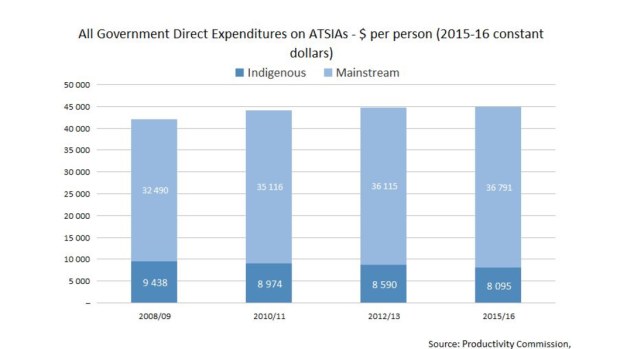Opinion

To close the gap, policy and funding matter
Grant WilsonContributorBack in April we wrote that COVID-19 represents a once-in-a-generation opportunity to reset relations between Australia’s government and its Indigenous community.
That is still our view. But the Morrison government has its work cut out from here.
It is not being helped by the Finance Minister’s recent comments, especially on Friday. There is room for disagreement in terms of the Black Lives Matters protests.
But there is no place to threaten the social safety net of those attending. That is not a conversation worth having.
There are four substantive matters ahead.
In July, the National Cabinet will be presented with the new National Agreement on Closing the Gap.
This has been in train since late 2018. It represents a unique partnership between COAG and the Coalition of Peaks, a representative body of approximately fifty community controlled organisations.
The Agreement is expected to focus on at least nine priorities areas: families, housing, justice, health, economic development, culture, education, healing and discrimination.
In August, submissions will close regarding the creation of an Office of Indigenous Policy Evaluation (OIPE).
This was proposed by the Productivity Commission earlier this month, after a year-long review.
It is conceived as sitting within an existing, yet non-specified, statutory authority of the Commonwealth government, with a whole-of-government remit in respect of policy evaluation.
In early October, the Commonwealth budget will be handed down.
And at some point over the next few months, the Minister for Indigenous Australians is expected to unveil a mechanism to enable public consultation regarding the Indigenous voice.
This stems from the Uluru Statement from the Heart in 2017. However, the Morrison government is proposing a legislative response, rather than a constitutionally enshrined First Nations Voice to Parliament.
The policy cycle matters
If the Morrison government is to progress where others have not, it needs to be focused on establishing a coherent, effective and iterative policy cycle.
As important as the targets embedded in the National Agreement will be, they will remain out of reach unless accompanied by an overhaul of how policy, planning, funding, implementation and yes, evaluation, works.
In this respect, the Productivity Commission’s report is helpful.
It highlights the critical role that data has to play throughout the policy cycle, as well as the deficiencies across government that have undercut continuous quality improvement.
Still, the readthrough from the various submissions made last year reveals a deep scepticism in terms of evaluation as a panacea. The Cape York Institute, for example, submitted that:
Indigenous communities are not laboratory environments, and the science of evaluation in such complex settings is not as precise as much of the rhetoric may suggest.
A contrasting perspective is from PWC, one of the many external evaluators that tick or cross a box on Indigenous programs, and enjoy a secure revenue stream from different levels of government in doing so:
In our co-design work around the country, including on major reform projects, we have seen that Aboriginal and Torres Strait Islander communities who have been appropriately informed and are generally actively engaged and can bring forward impressive program, policy and service design input in relatively little time.
Frankly, it would be difficult to craft a more patronising and culturally inept sentence than this.
There are broader doubts about establishing an entirely new bureaucratic layer in the form of OIPE, particularly as Indigenous involvement may be restricted to an advisory capability, in the form of an Indigenous Evaluation Council.
An alternative route is to embed Indigenous led evaluation at the department level, and for the Australia Public Service Commissioner to establish coherent guidelines that promote the holistic policy cycle envisioned by the Productivity Commission.
Direct funding is required
Beyond this, there is the key issue of funding.
Despite the urging of the Coalition of Peaks, the National Agreement will not be accompanied by any form of budgetary commitment. Targets will be set, along with timelines, yet funding is not assured.
This stands in contrast to the National Indigenous Reform Agreement of 2008, where COAG committed $4.6 billion to fund Closing the Gap via Federal Financial Relations arrangements.
This puts the onus squarely on the Commonwealth budget in October. This is when we will see if the Morrison government is fair dinkum.
Indigenous housing is arguably the most important litmus test, as it is capital intensive, and responsibility tends to be passed around between different levels of government.
From a needs based perspective, it is not possible to justify the Homebuilder grant to the middle class, while not funding Indigenous housing as part of Closing the Gap.
Further context in this area is provided by the Productivity Commission, which has published four Indigenous Expenditure Reports since 2008/09.
In the most recent instalment, for 2015/16, it found $33.4 billion of direct government expenditure on Indigenous affairs, which is nearly 2 per cent of GDP in constant dollars. 44 per cent of this spending was attributed to the Commonwealth, as against 56 per cent to State and Territory governments.
That is certainly a lot of money, a point which has been made repeatedly in Canberra over the past decade.
But it does not factor the need of the Indigenous community, nor does it adjust for the bureaucratic waste.
Moreover, the headline obscures the preferred path ahead.
Some 82 per cent of the spending identified by the Productivity Commissions is through mainstream programs, that support education, health and employment, along with a disproportionate drawdown on ‘public order and safety’.
The spending reflects not just the embedded disadvantage, but the higher cost of providing services in remote areas.
The remaining 18 per cent, that goes directly to the Indigenous sector, is widely seen as a more efficient use of funds, particularly in health.
Despite this, as our chart shows, direct funding for the Indigenous sector has declined, both in absolute per person terms, and as a percentage of total since 2008/09.

Direct funding for Aboriginal and Torres Strait Islander Affairs has declined, both in absolute per person terms. Exante
Things are actually going in the wrong direction.
Put simply, governments should increase direct funding, based on need, as part of Closing the Gap.
This will reduce the dependency of Indigenous Australians on mainstream programs. If successful, over the fullness of time, Closing the Gap will finance itself.
For this rotation to occur,
Indigenous leadership needs to be empowered. Not with a blank check, but with the capability to make decisions and to deliver services as preferred providers. That, in turn, will require trust and delegation.
The clearest example of this is in health, where the National Aboriginal Community Controlled Health Organisation (NACCHO) is the peak body. NACCHO has been widely acclaimed for its role throughout COVID-19.
NACCHO should be championed by the Morrison government, and enabled to do much more.
The path to treaty
Further beyond, there is Voice, Treaty, Truth, as envisaged at Uluru and as foreshadowed by a Makarrata Commission.
These proposals are of enormous symbolic and political importance.
But we are not expecting the Morrison government to give much ground, at least in this parliamentary term.
Still, this only increases the importance of practical initiatives being authored in the key months ahead. Words will need to be backed by actions, to capture the moment in time.
The author grew up in Alice Springs.
Subscribe to gift this article
Gift 5 articles to anyone you choose each month when you subscribe.
Subscribe nowAlready a subscriber?
Introducing your Newsfeed
Follow the topics, people and companies that matter to you.
Find out moreRead More
Latest In Economy
Fetching latest articles